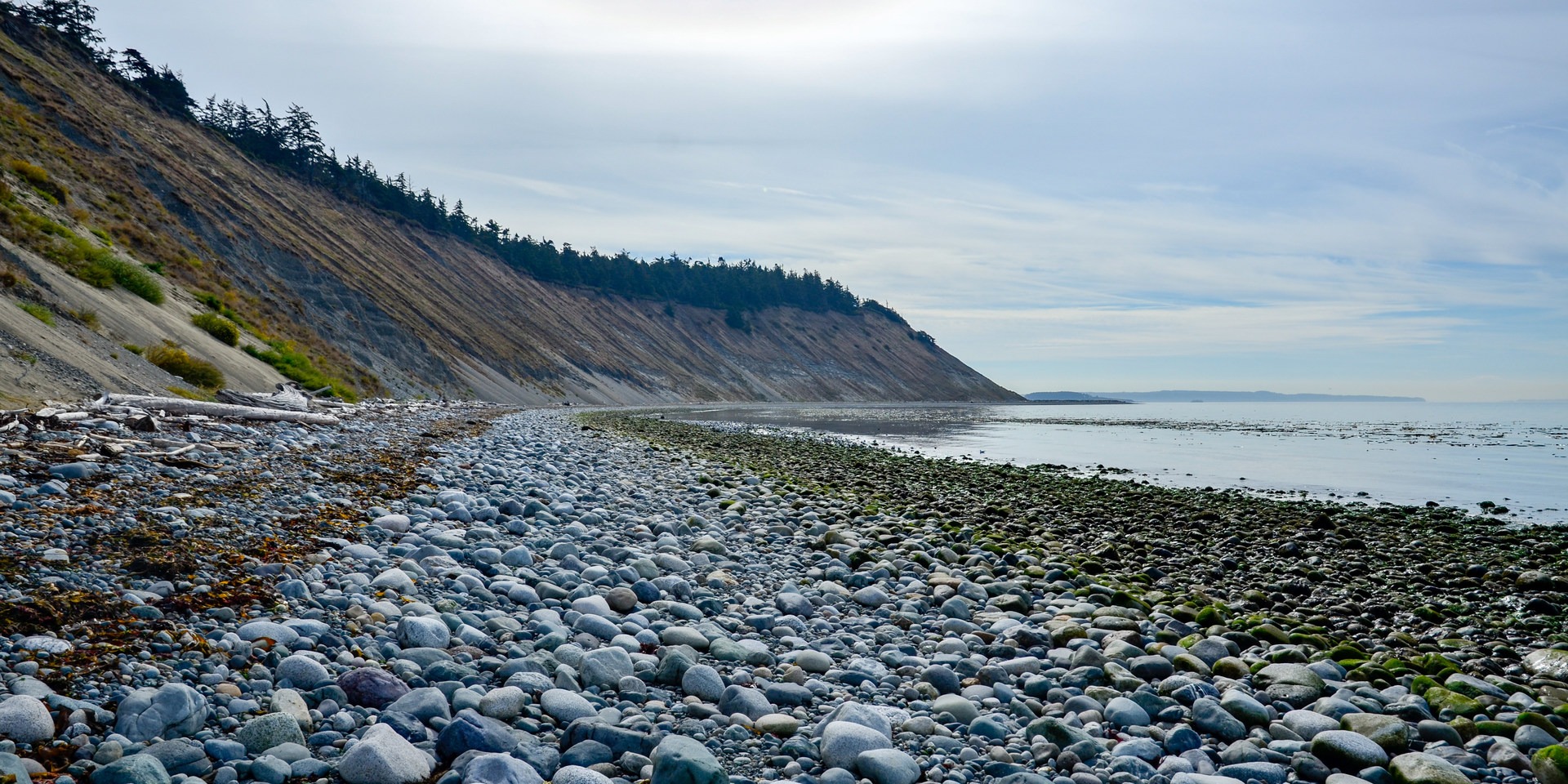You are here
The short leg of the Pacific Northwest Trail from Anacortes, along Whidbey Island, and by ferry to Port Townsend on the Olympic Peninsula is a mix of road, trail, and beach walking. From Anacortes the trail crosses a beautiful bridge shared with Highway 20 to reach Whidbey Island, and the majority of the trail goes along the island's western shores. The bridge has ample sidewalks and is a popular crossing for people visiting the area.
Upon reaching Whidbey Island, thru-hikers have the option to take one of two equidistant routes from Deception Pass State Park. The main route heads east from the park and along Jones Road, Taylor Road and then Fakkema Road before intersecting with Highway 20. An alternate route with fewer road miles heads west from Deception Pass State Park but requires hiking for a few miles on Highway 20. It's up to thru-hikers how they want to navigate this connection zone before continuing around the Naval Air Station operated at Ault Field. As a functioning naval base, the sounds of military jets punctuate the ambience at regular intervals, and the jets will almost certainly be a regular sight overhead as you make your way south.
Once past Ault Field the trail continues along the beach and adjacent to W Beach Road to Fort Ebey State Park. From here it's a short hike along the Bluff Trail to reach Fort Casey State Park and the Keystone Ferry Terminal to Port Townsend. The 13.6 miles of PNT along the beach and trail of Whidbey Island's west coast is a beautiful journey. The beach is often contained by a high bluff above it. Certain areas are popular with tourists and residents, while others are more rarely walked. Shorebirds are a common sight, picking through rocks along the beach for food. With some luck you may see orcas swimming in the waters of Puget Sound among the ferries and large freight ships that ply the waters.
There are limited camping options on Whidbey Island. Deception Pass State Park has three designated campgrounds. The largest is at Cranberry Lake, with 147 tent sites and five specifically reserved for hikers and bikers. Fort Ebey State Park has 39 standard campsites. Campsites can be reserved ahead of time, which is recommended if you are arriving on a weekend or during the busiest part of the summer. Fort Casey State Park next to the Keystone Ferry Terminal also has 21 standard tent sites. Alternately, consider booking a room in one of the various hotels or B&Bs on Whidbey Island, but again, you should plan ahead on the busy summer season.
Ferries to Port Townsend run on regular intervals from Keystone Ferry Terminal, also referred to as Coupeville Terminal and named for the nearby town of Coupeville on Whidbey Island. Ferries run every 90 minutes from 7 a.m. until 9 p.m., but the actual schedule varies based on the time of year. Adults will need to pay the $3.25 fare for the 30-minute trip.
Port Townsend is a fun town with a large artistic community. Many thru-hikers opt to take a rest day here to recharge before the final push across the Olympic Peninsula. There are a number of great restaurants and bars in town, and hikers have the option to book a hotel room or stay in the town's youth hostel. There are also a few state parks and campgrounds around the town. Fort Worden State Park has five specifically designated walk-in sites for hikers and bikers, and Fort Townsend State Park Campground has four more. Both also have a number of car camping sites that can be reserved in advance.
For additional details, refer to the following PNT sections:
Logistics + Planning
Current Weather: Powered by Dark Sky
























Comments
Sign In and share them.